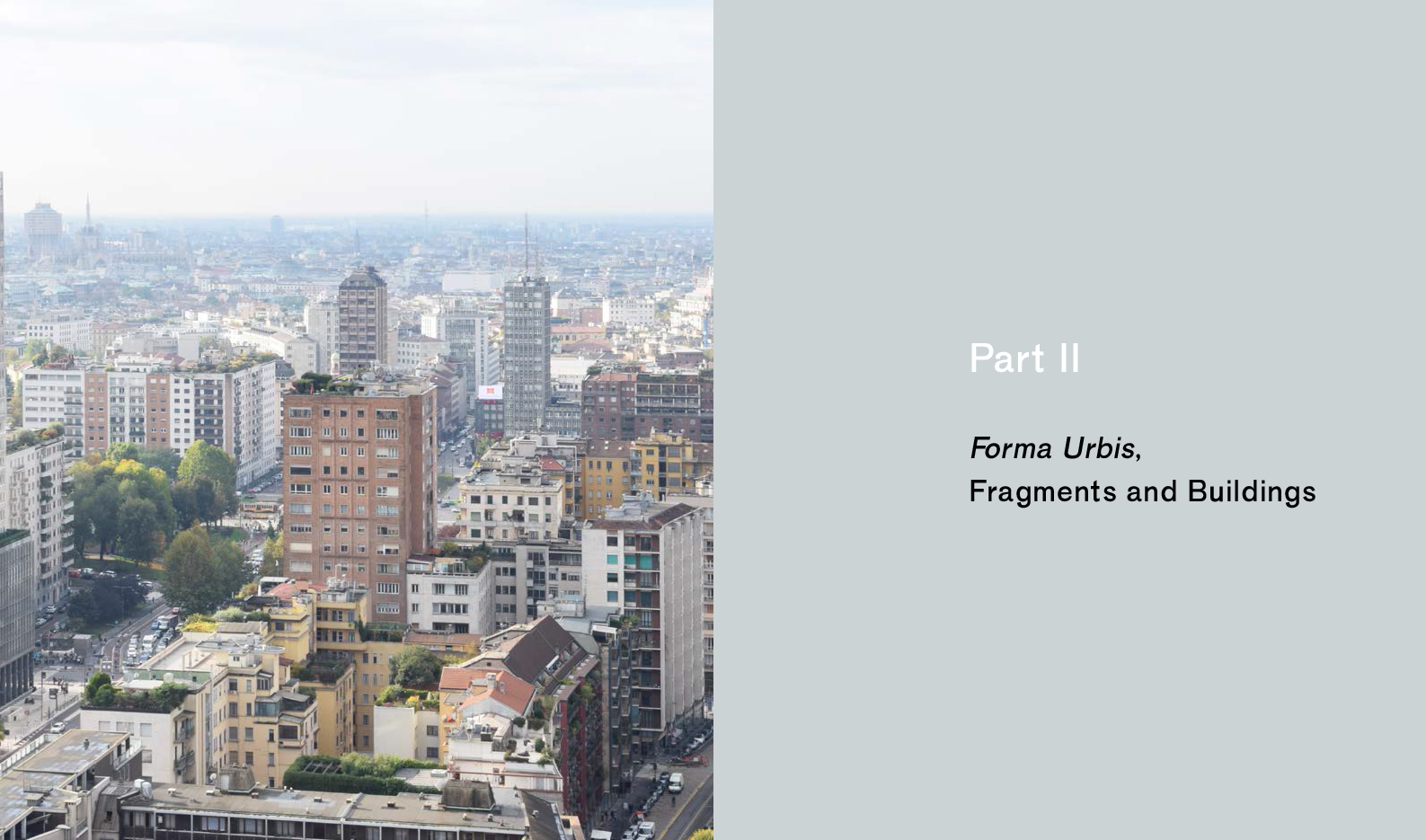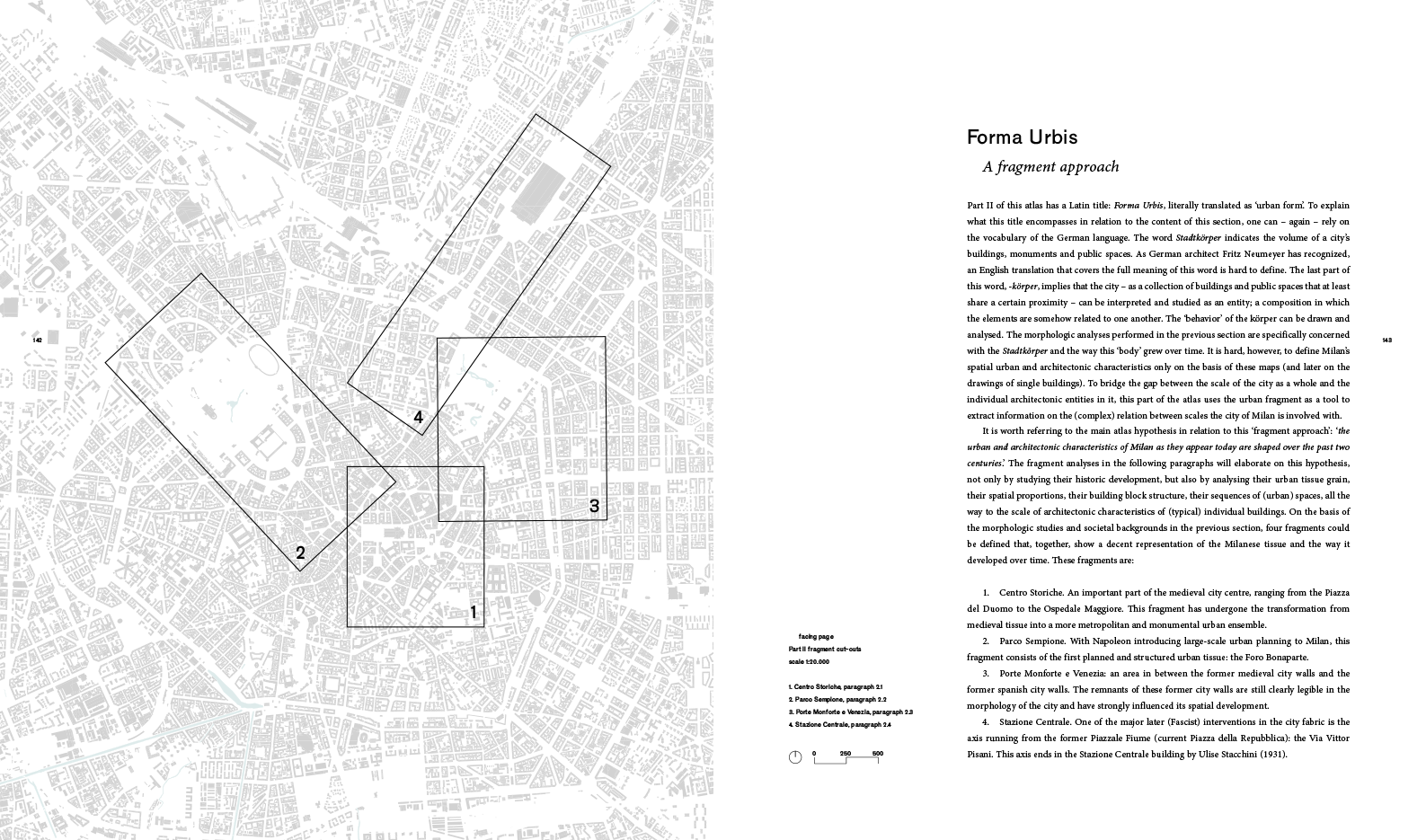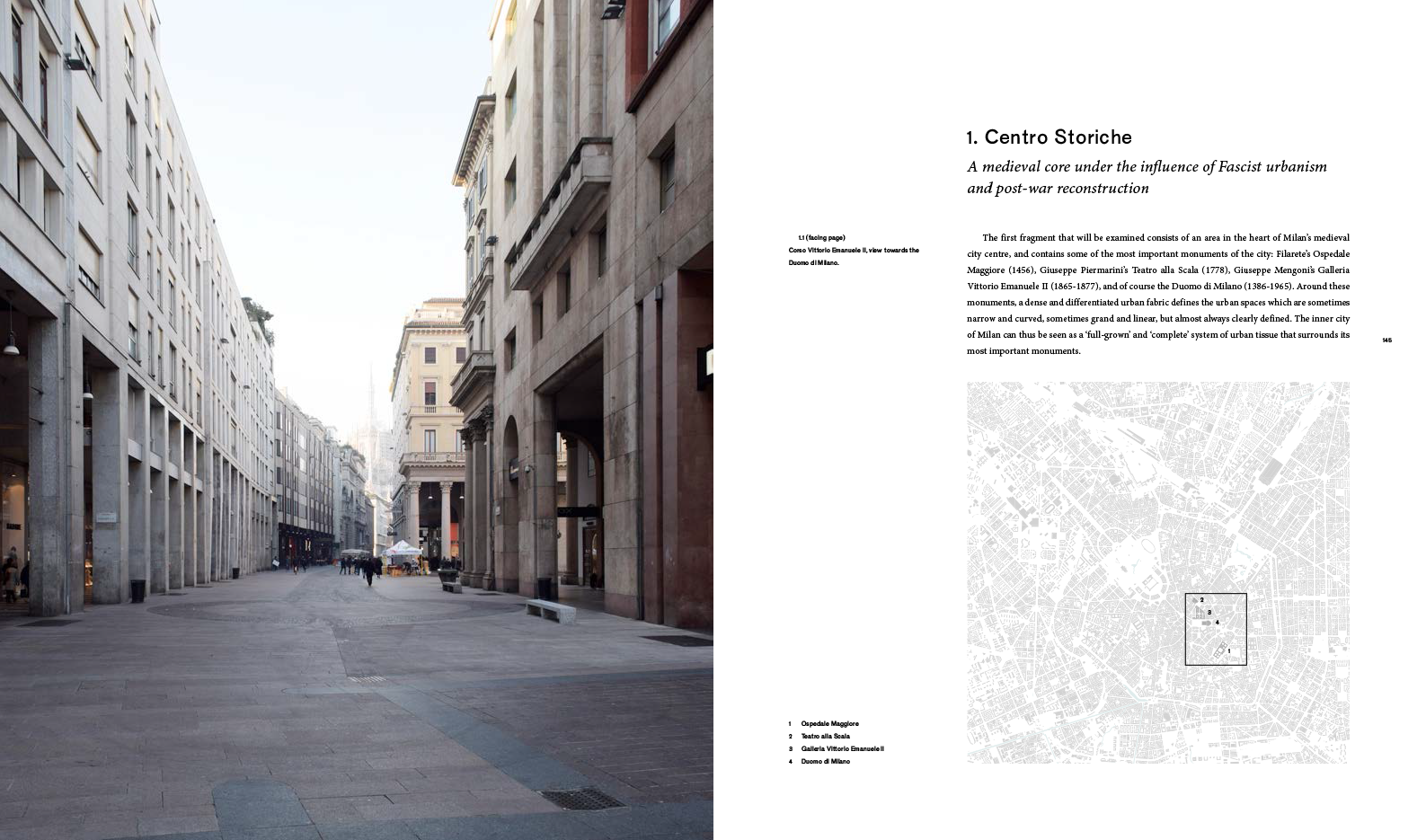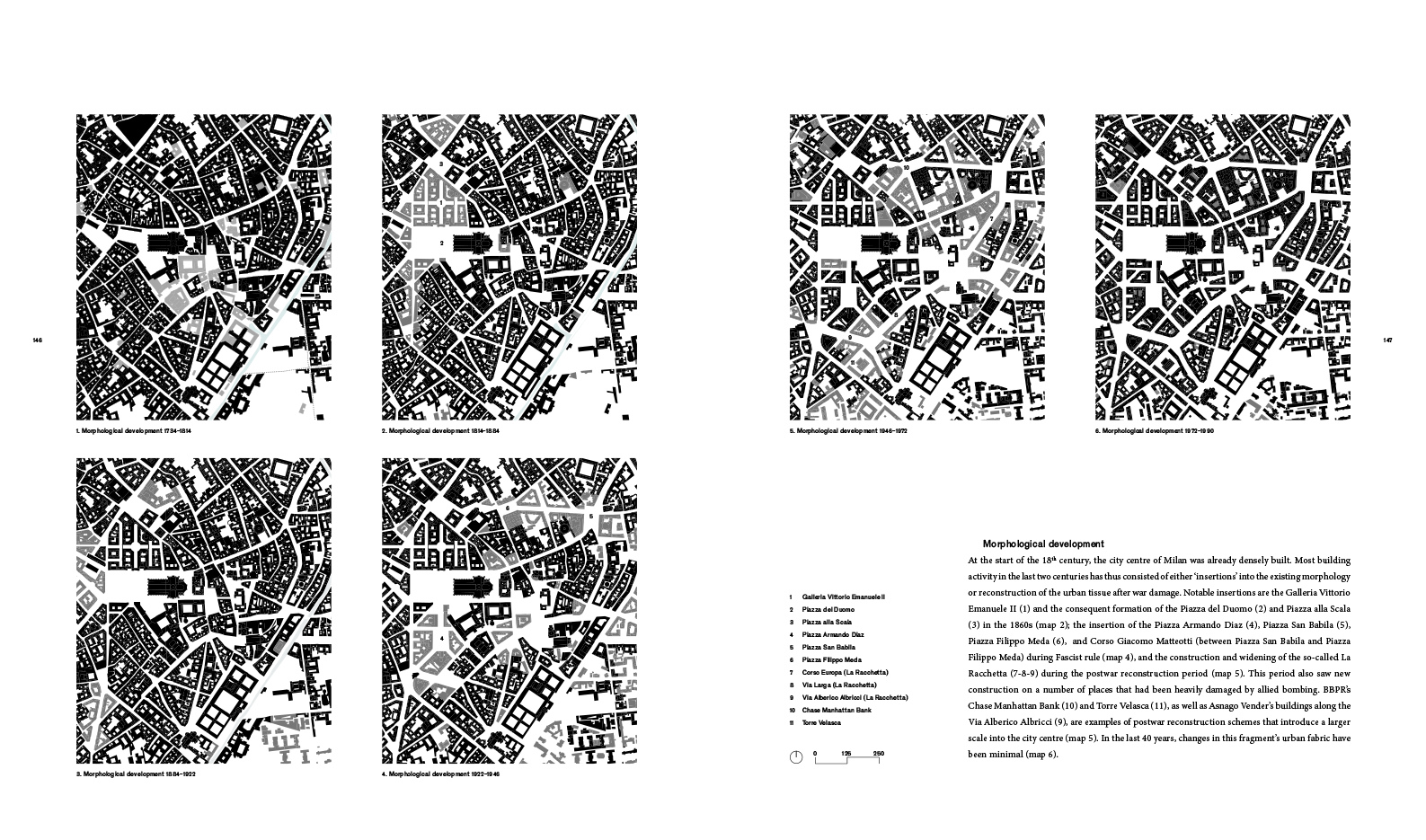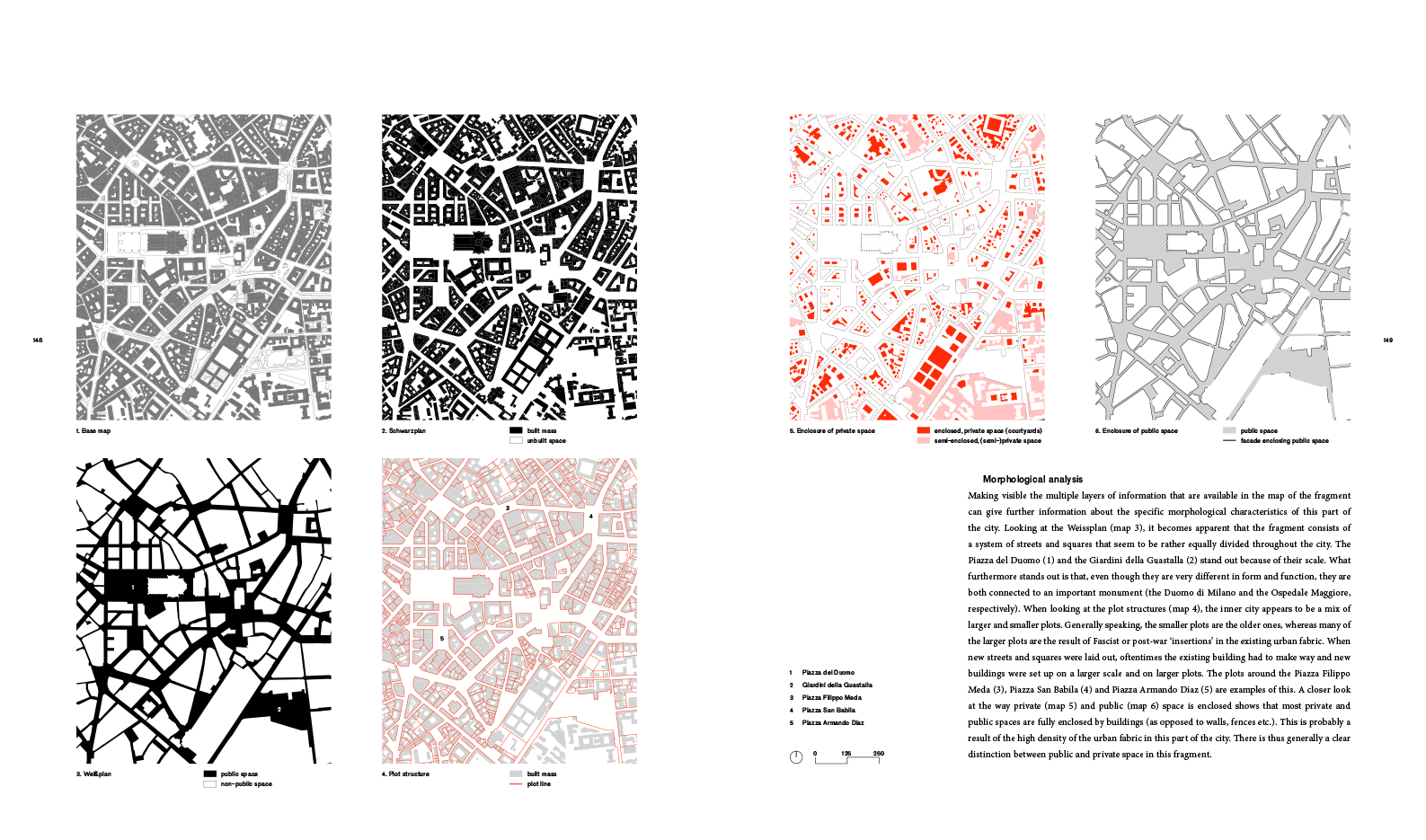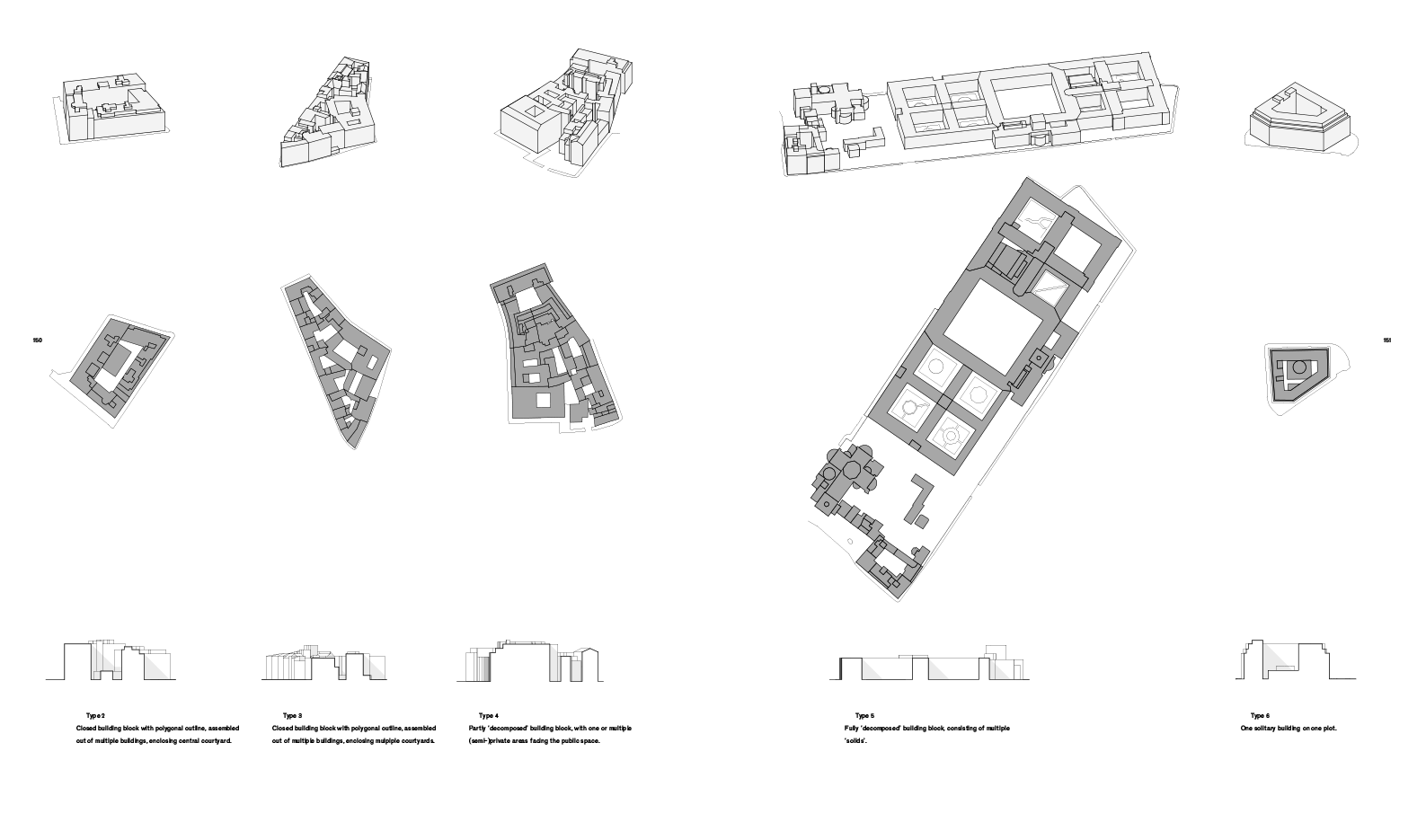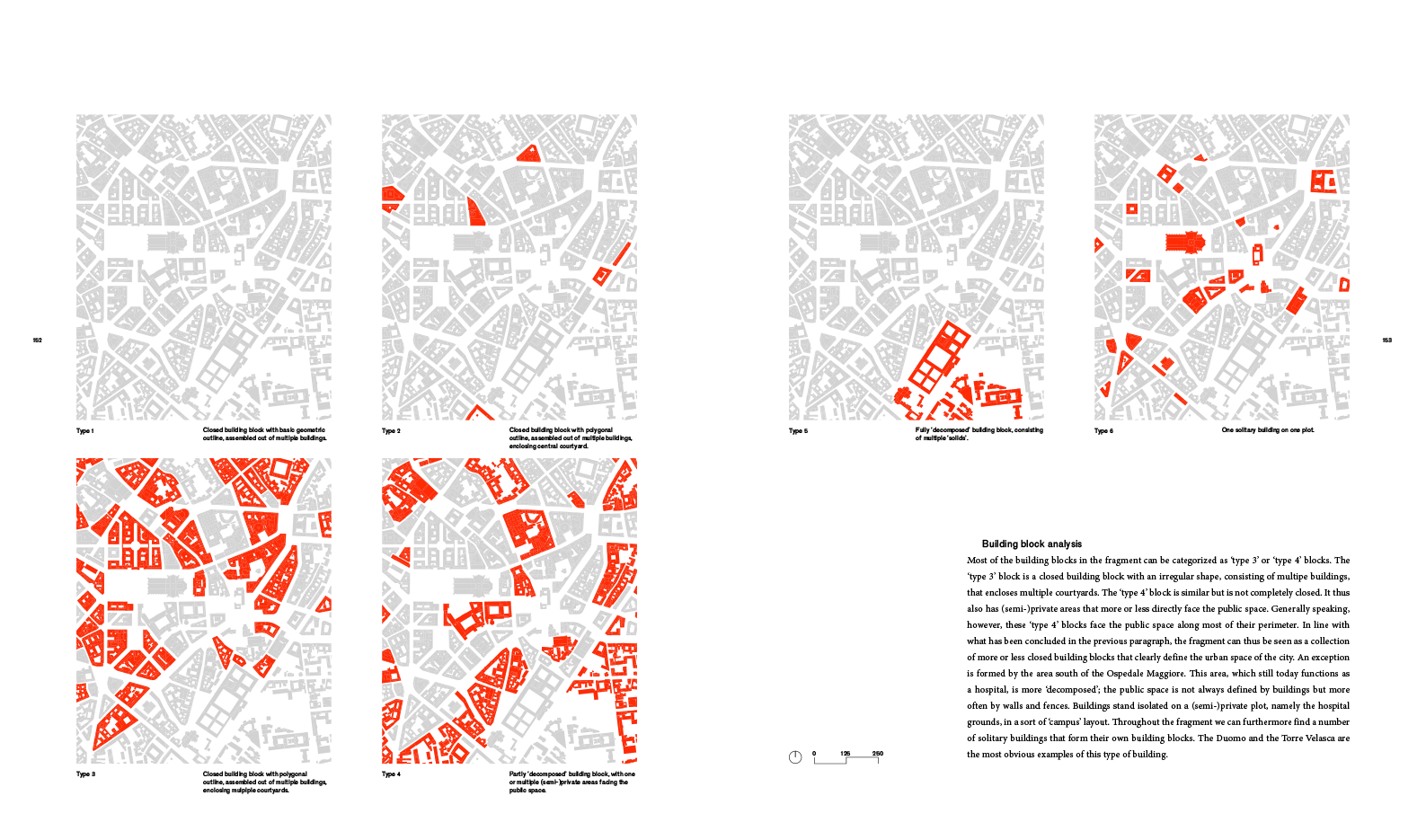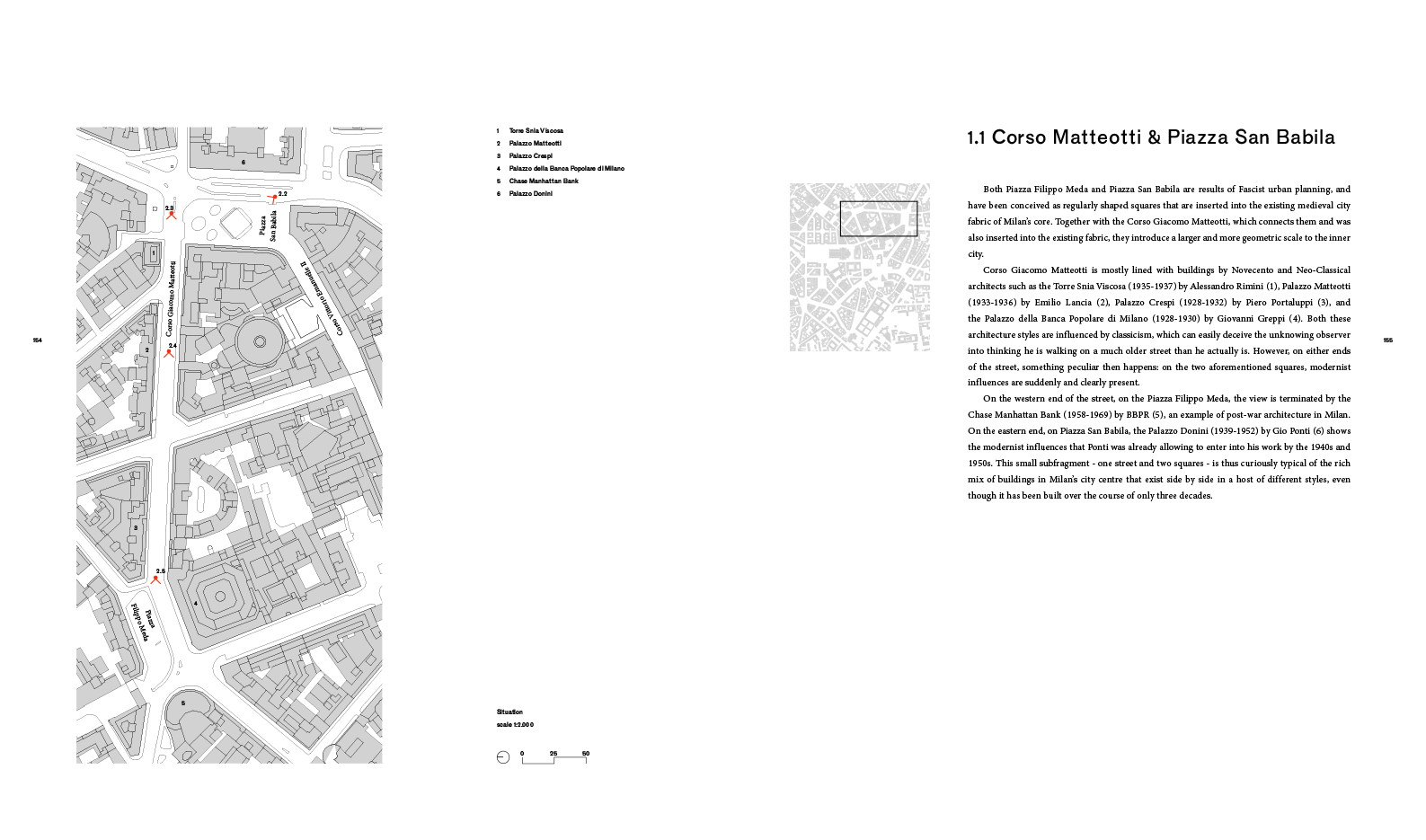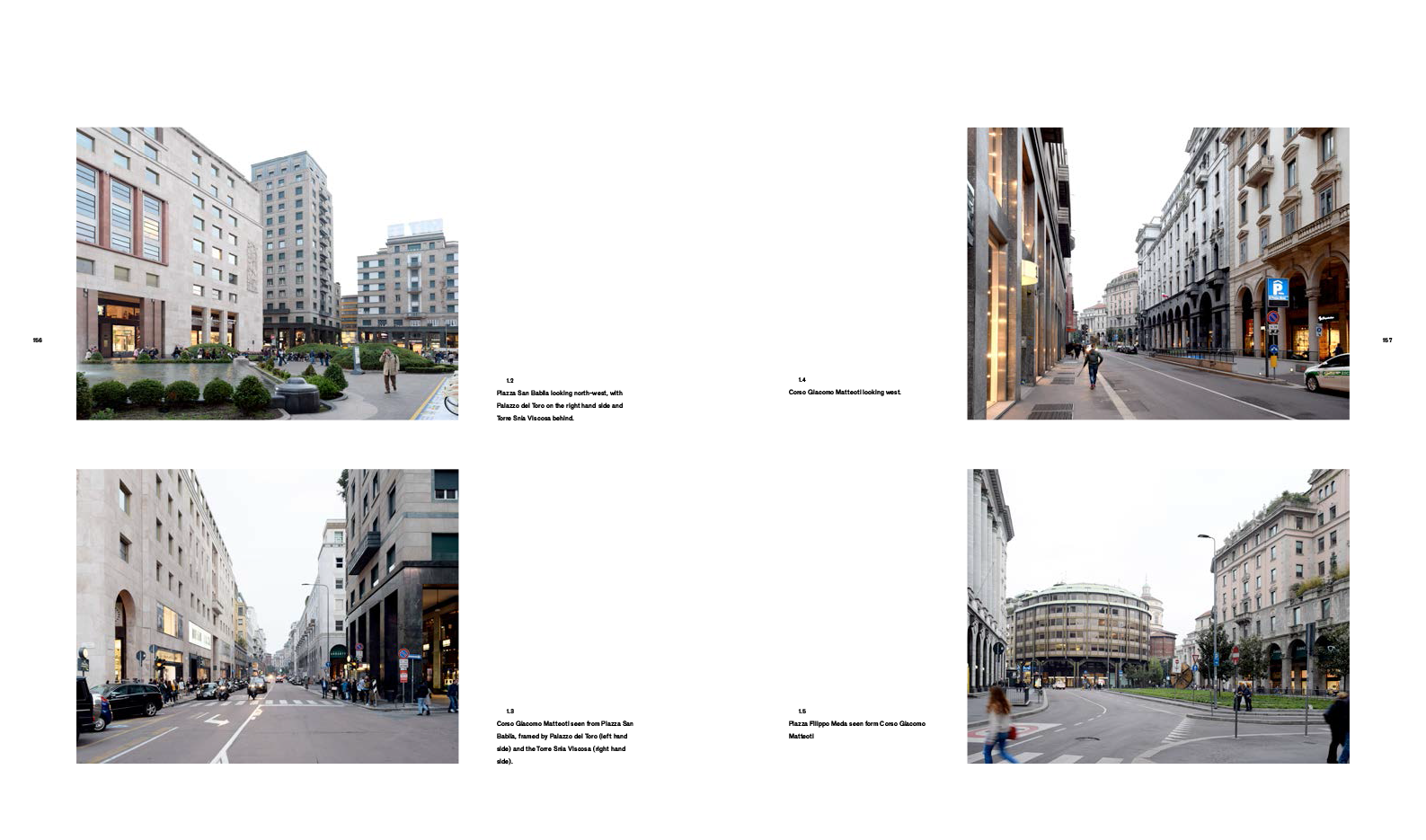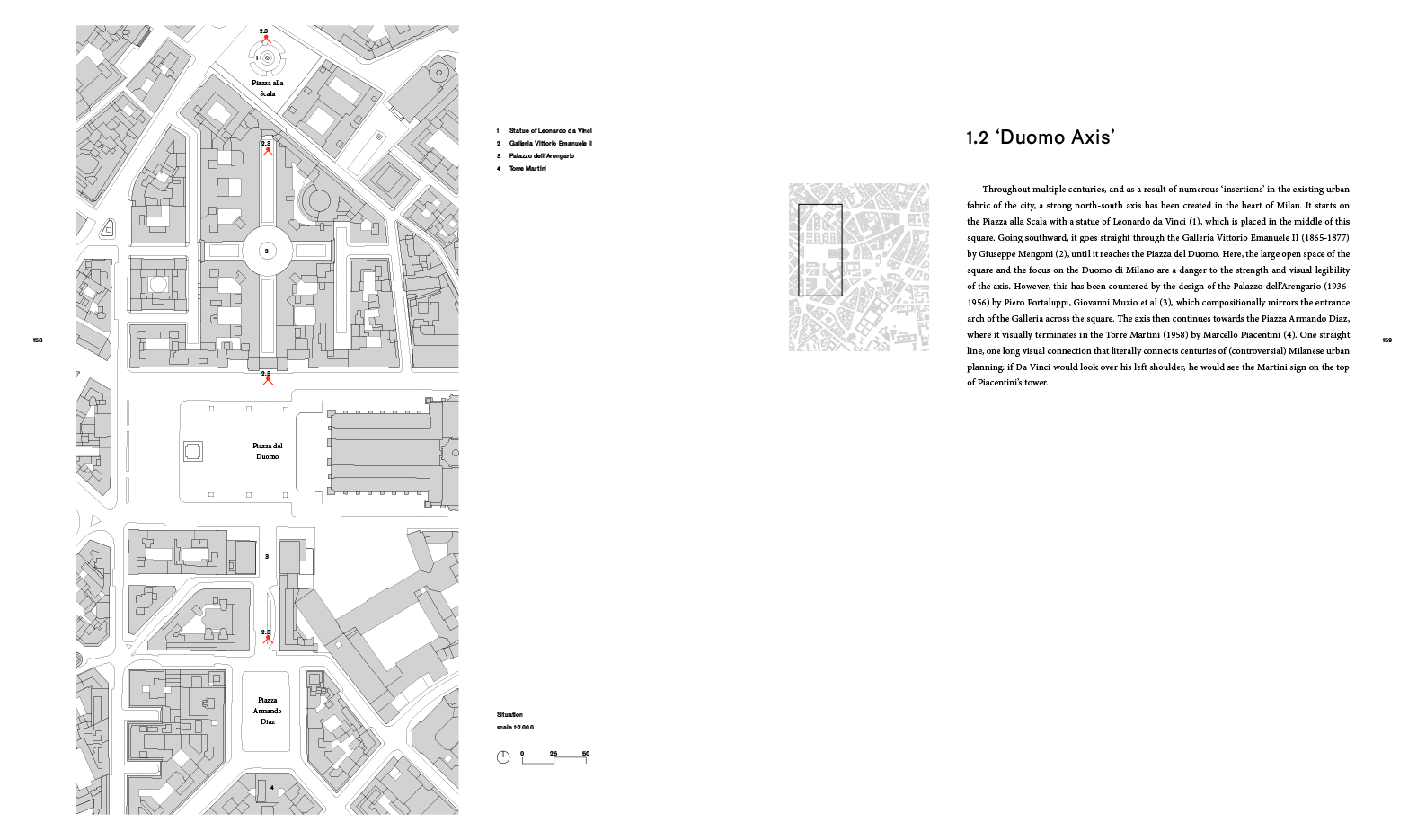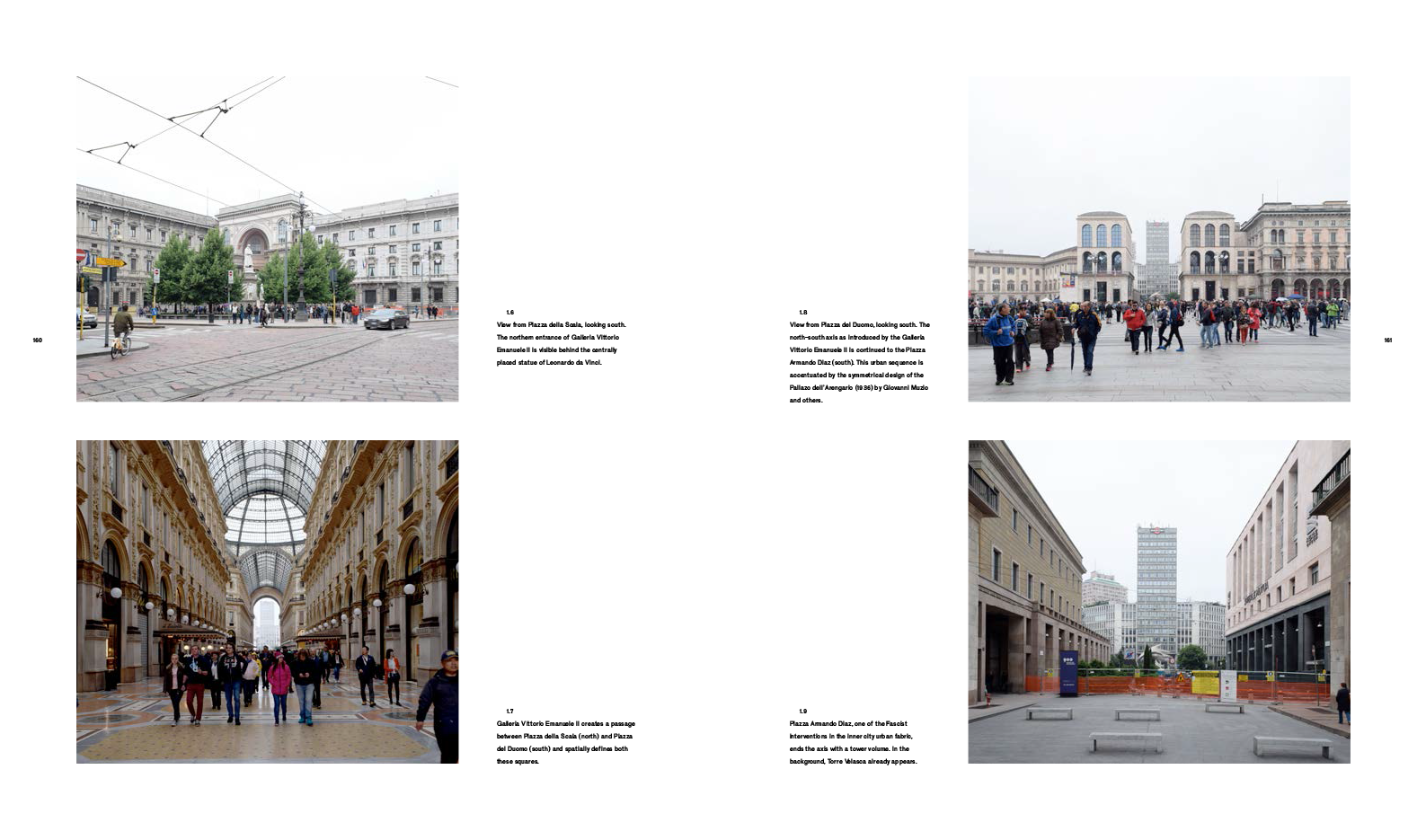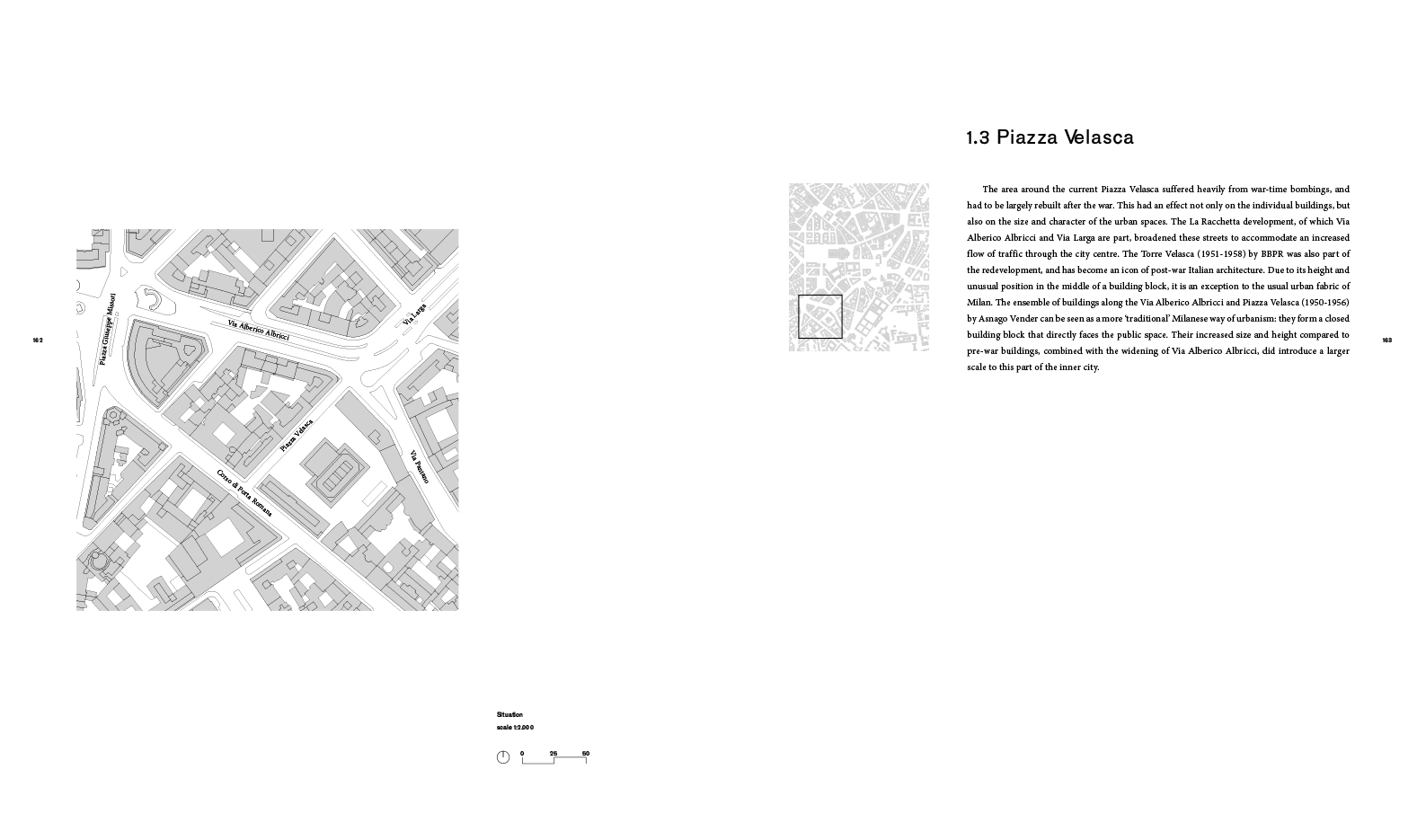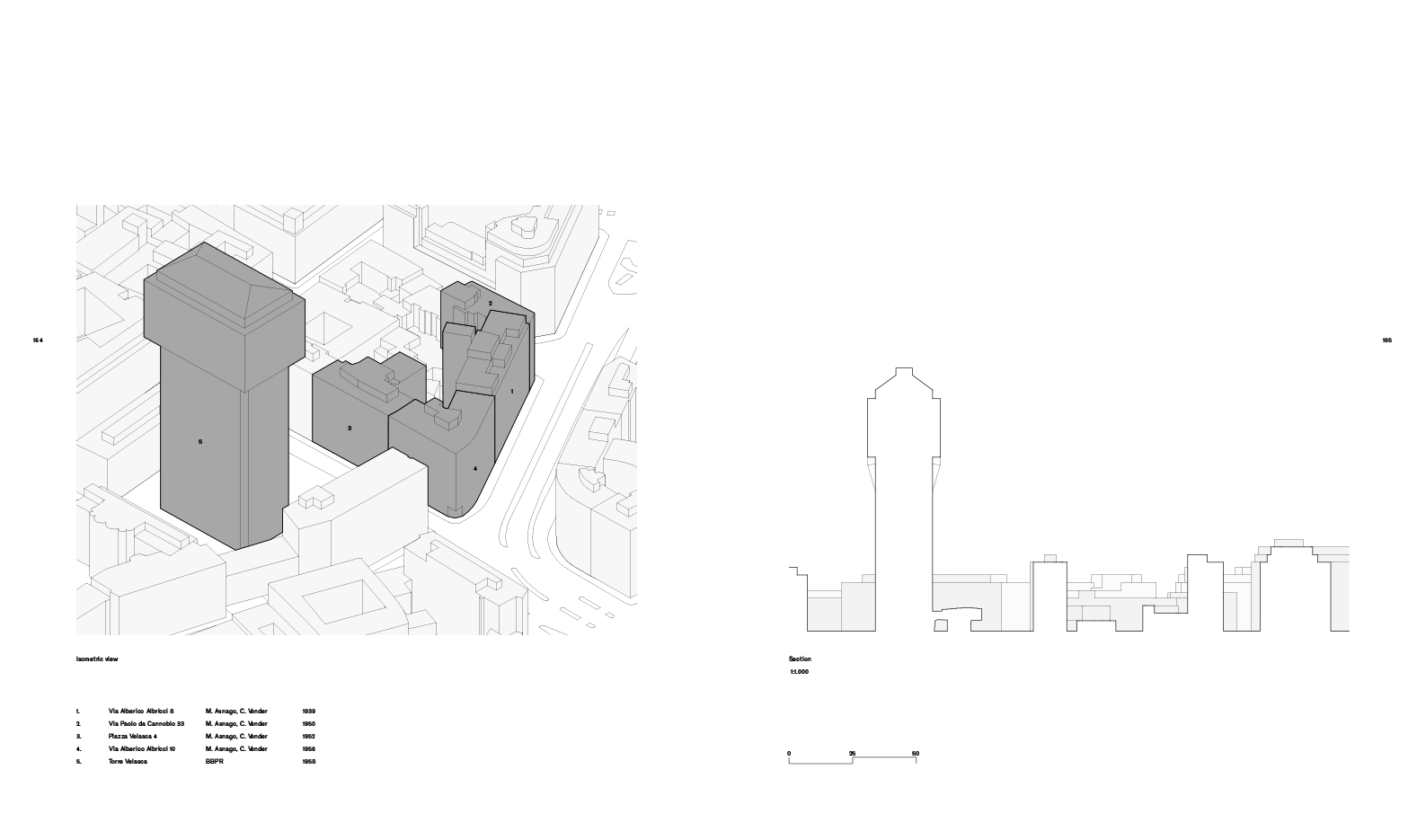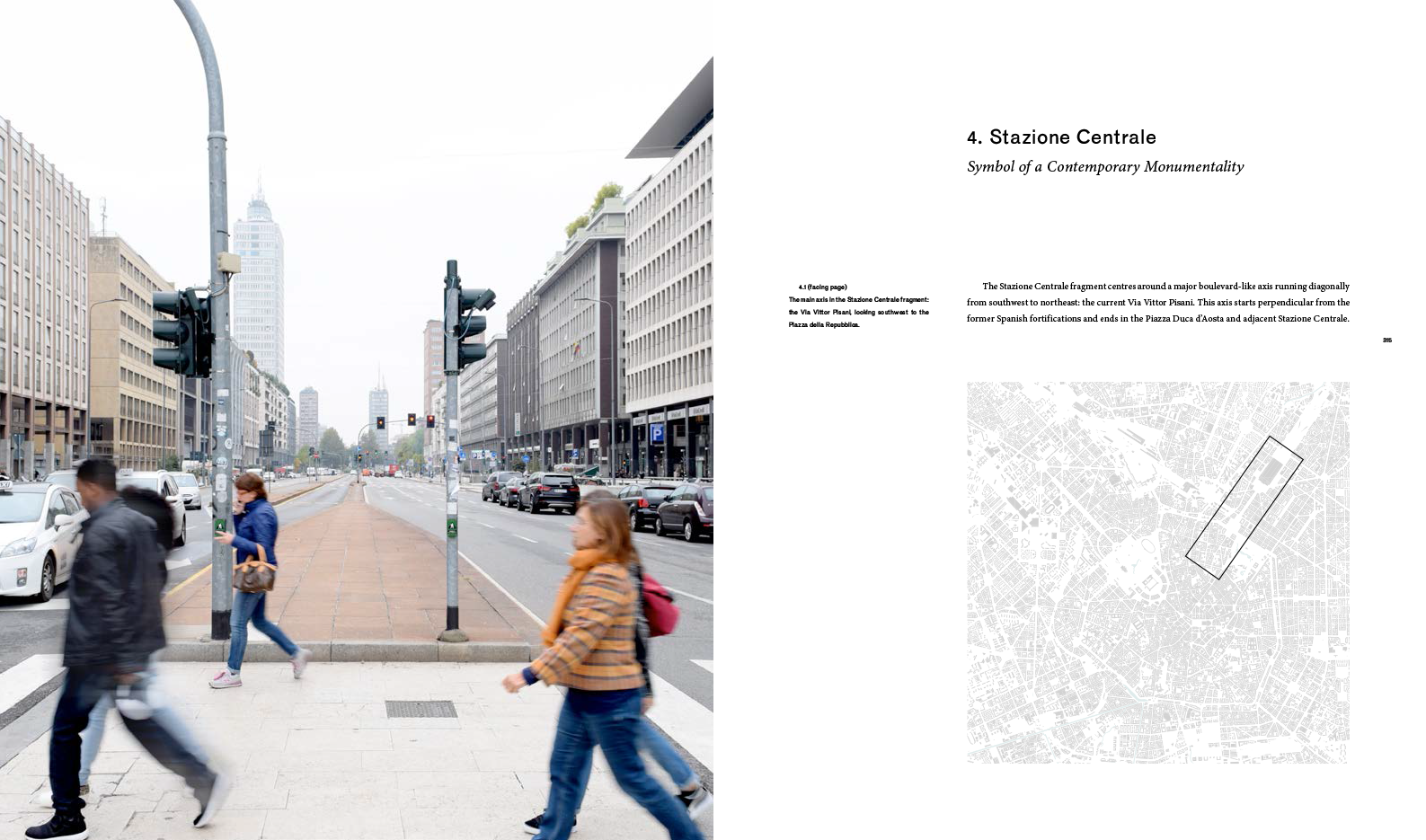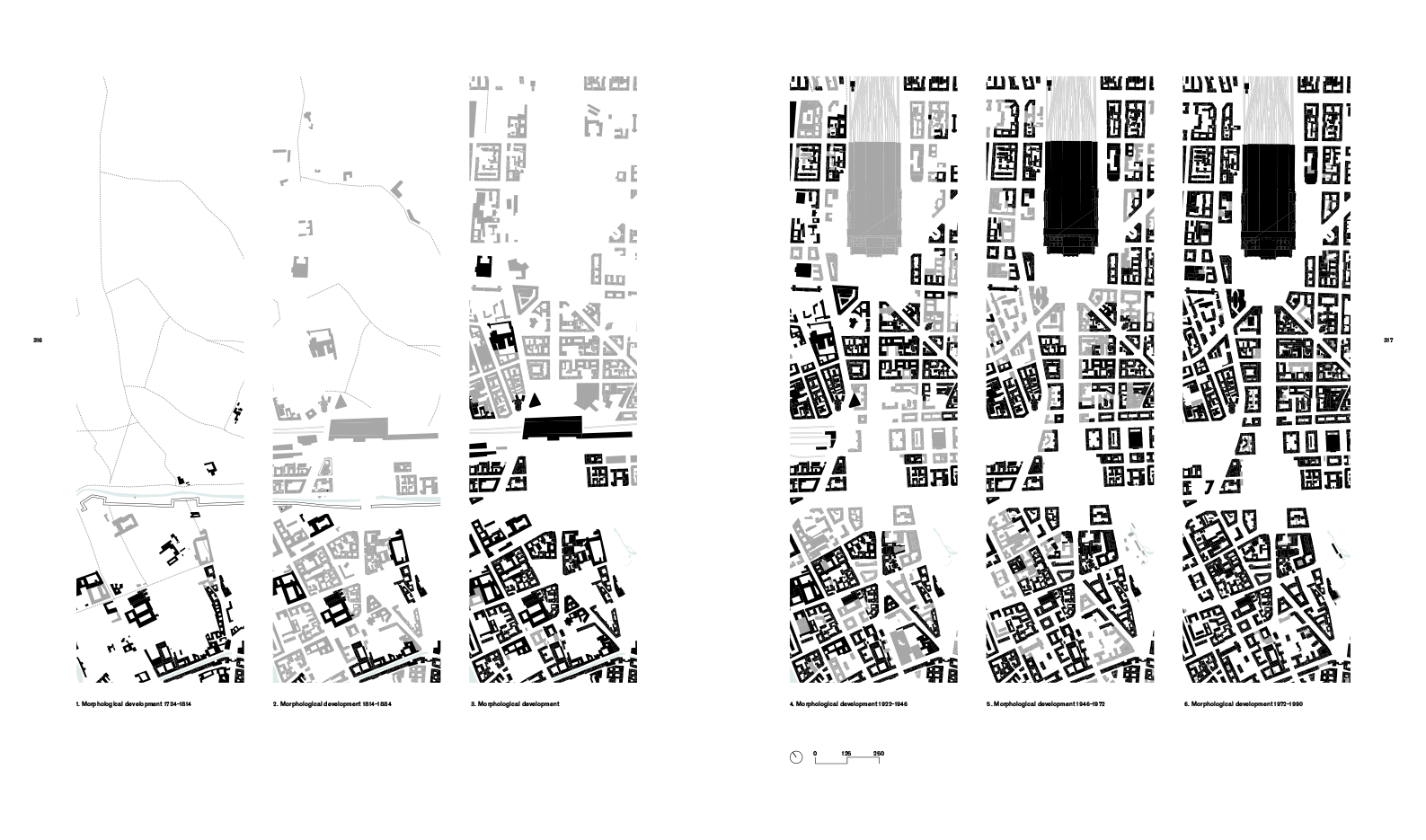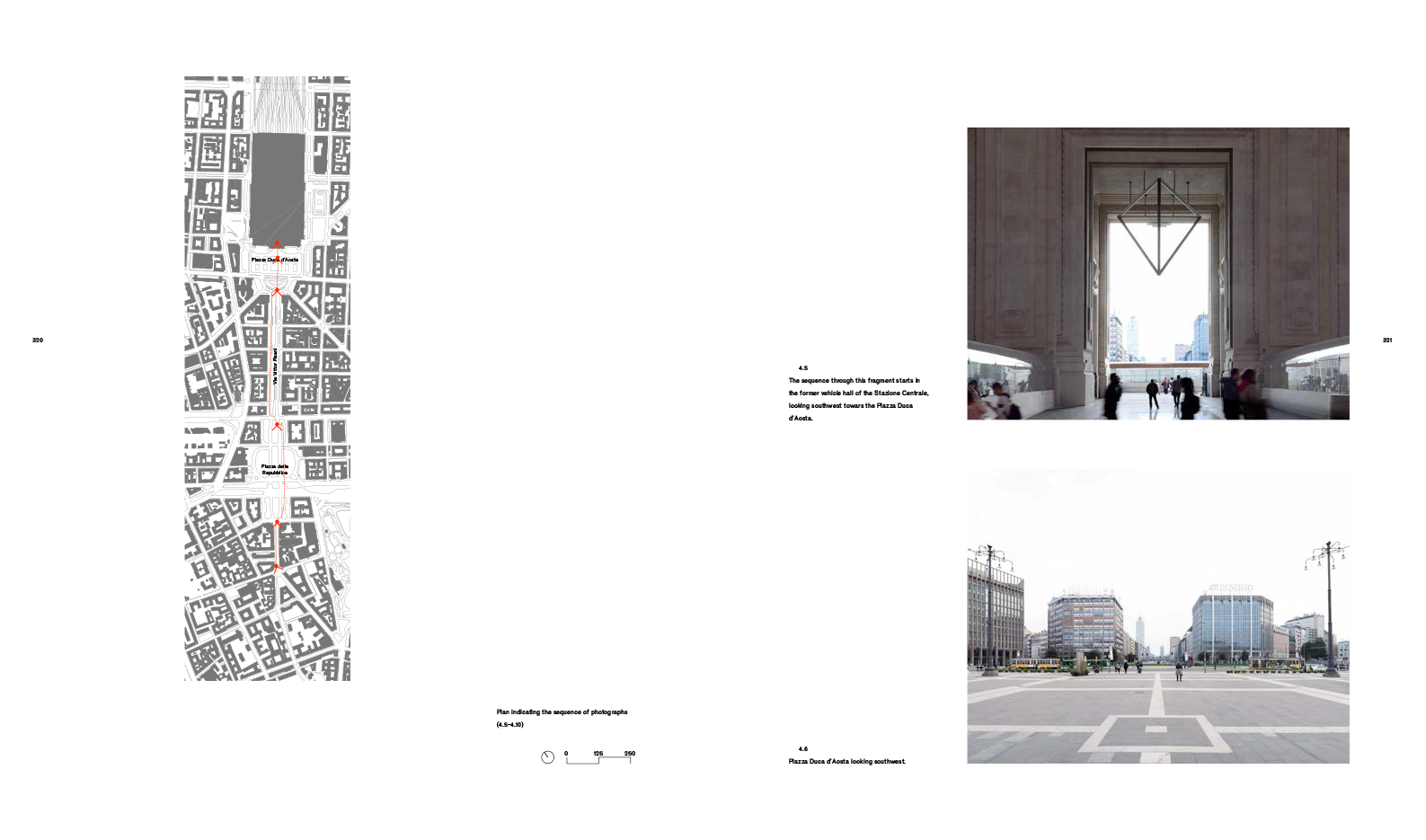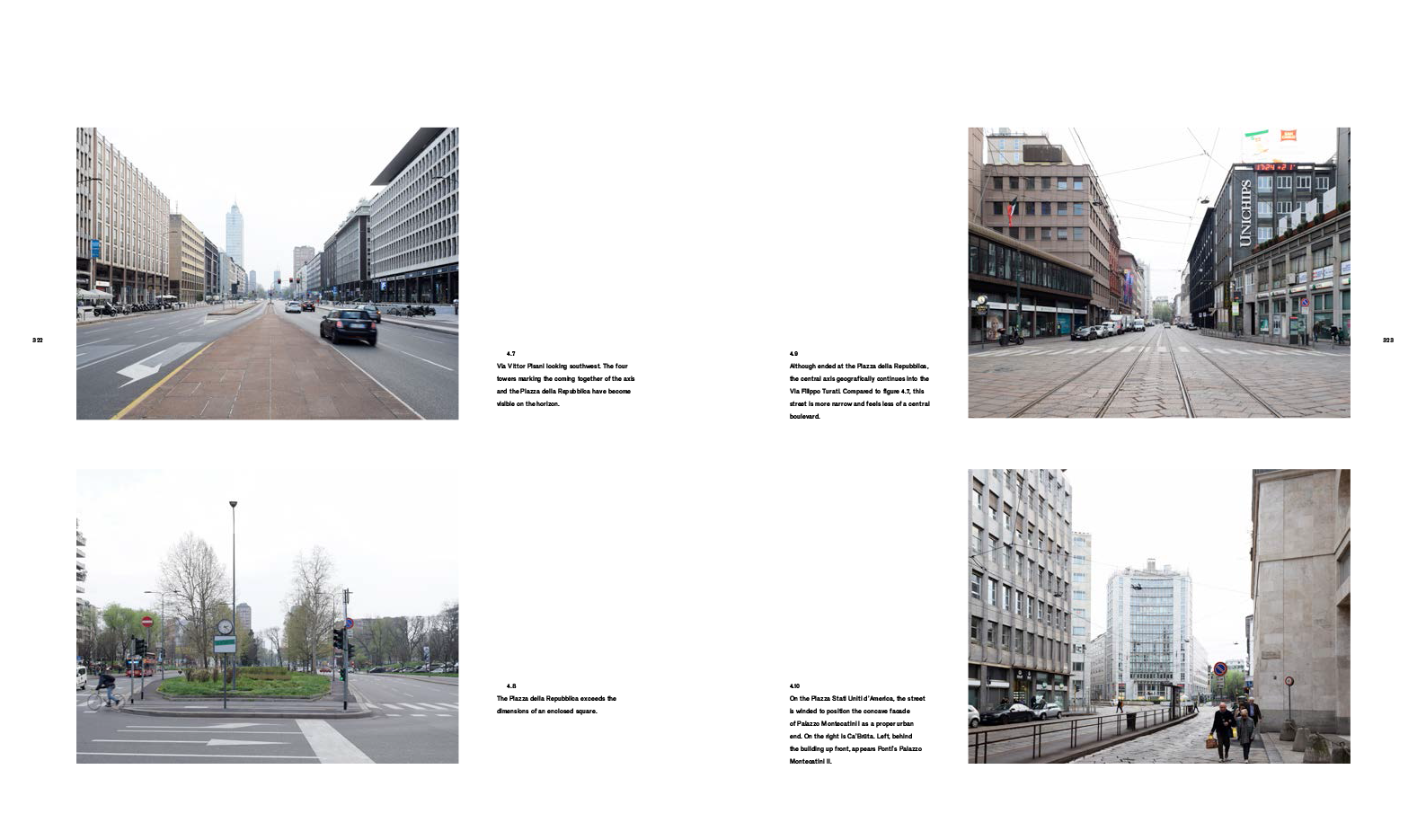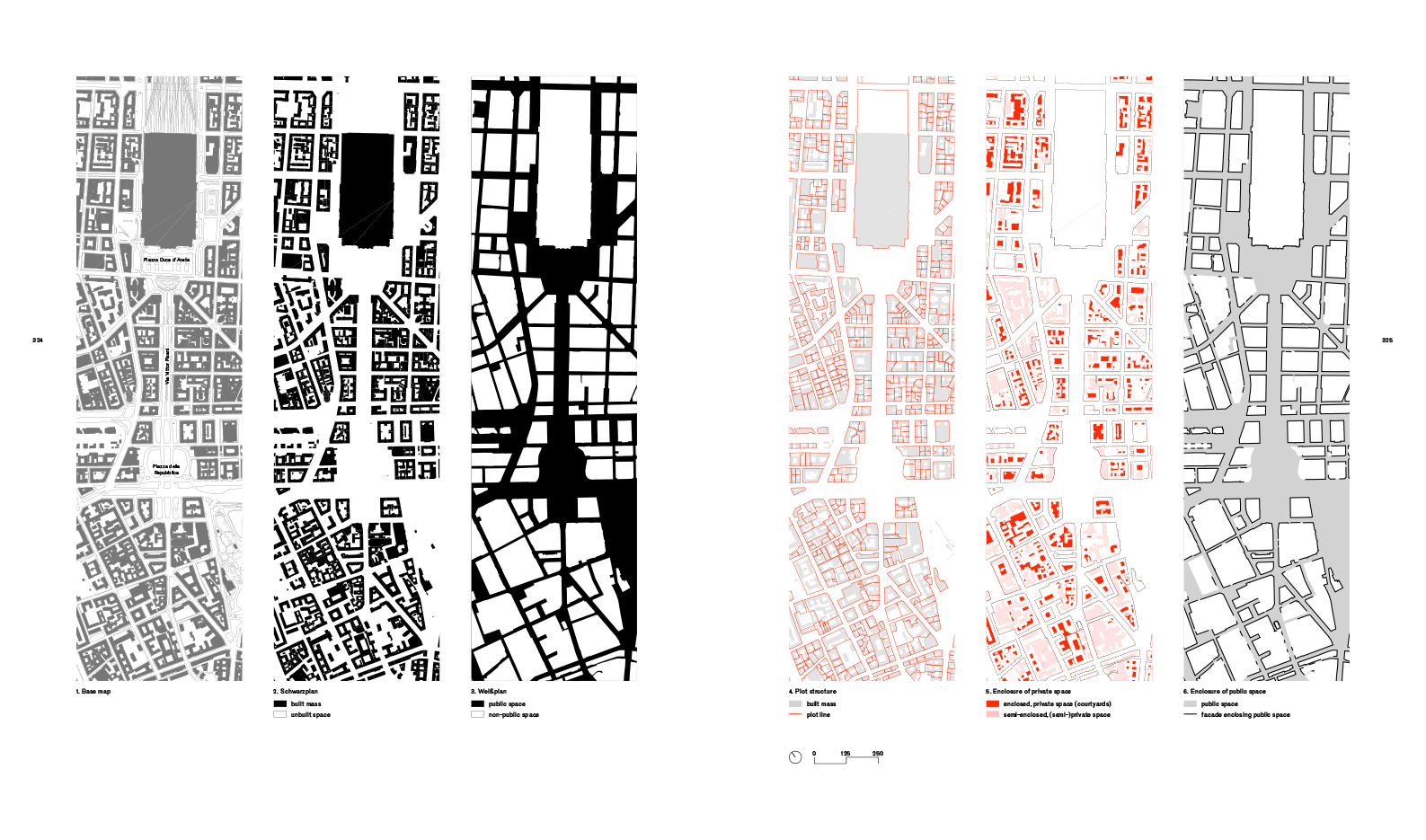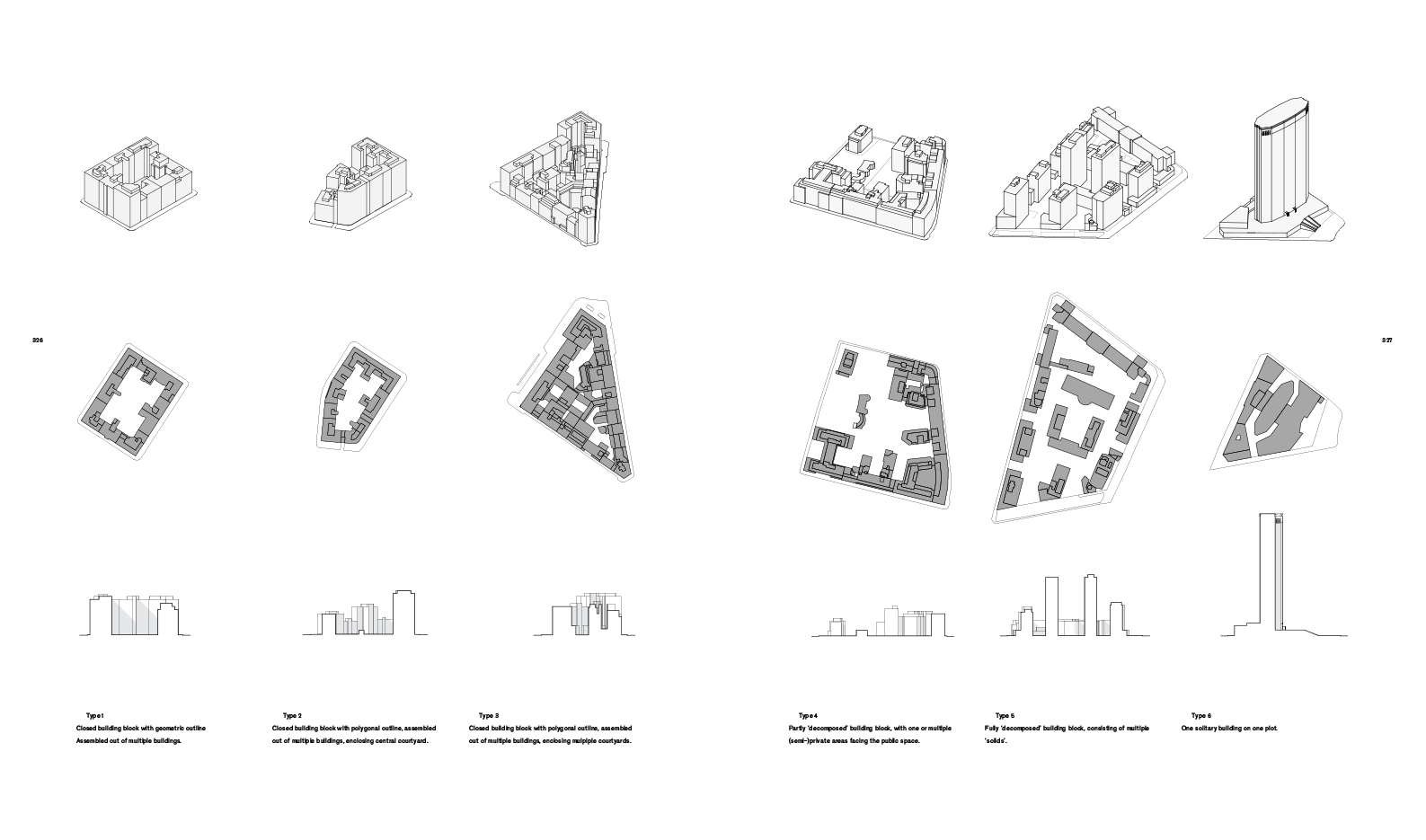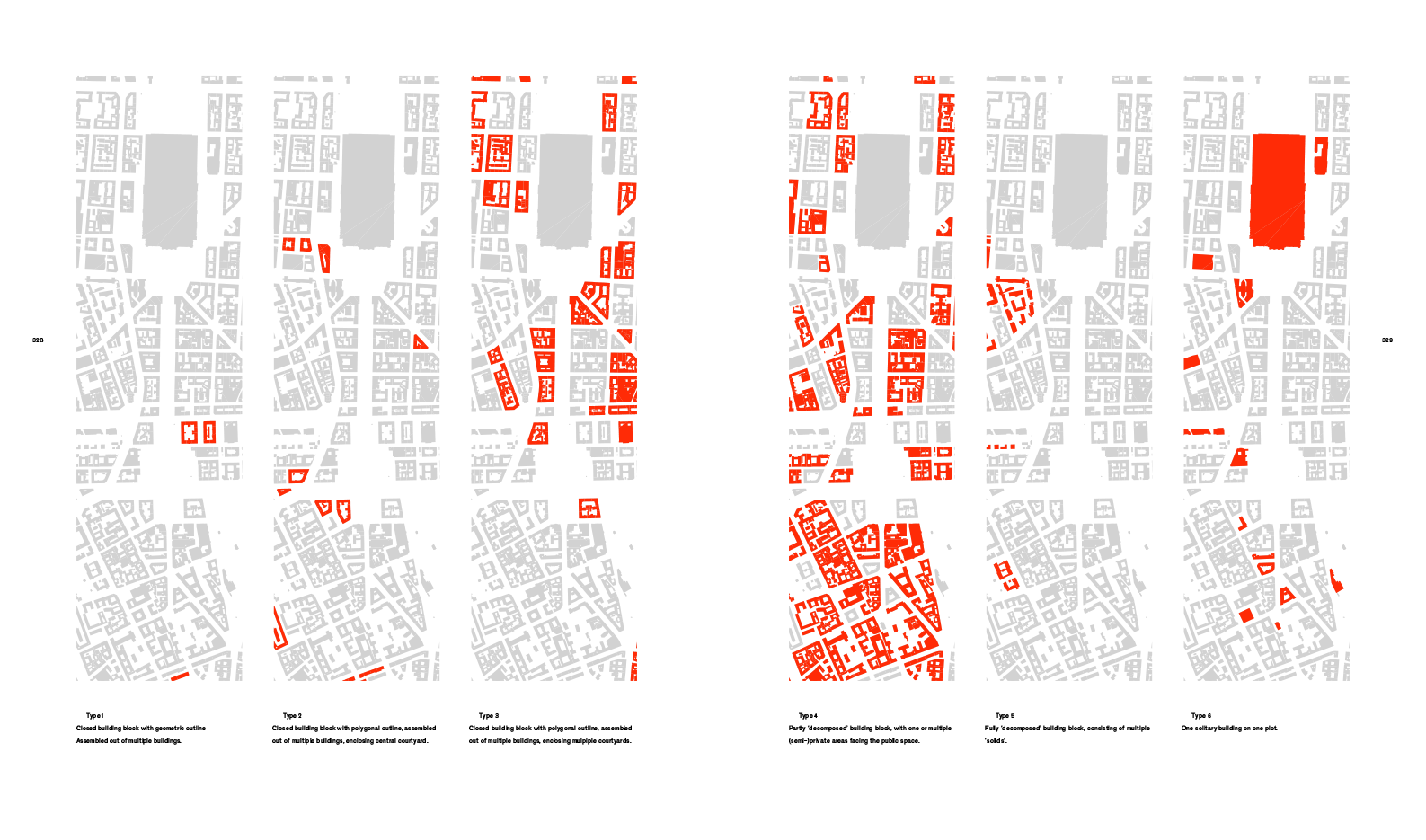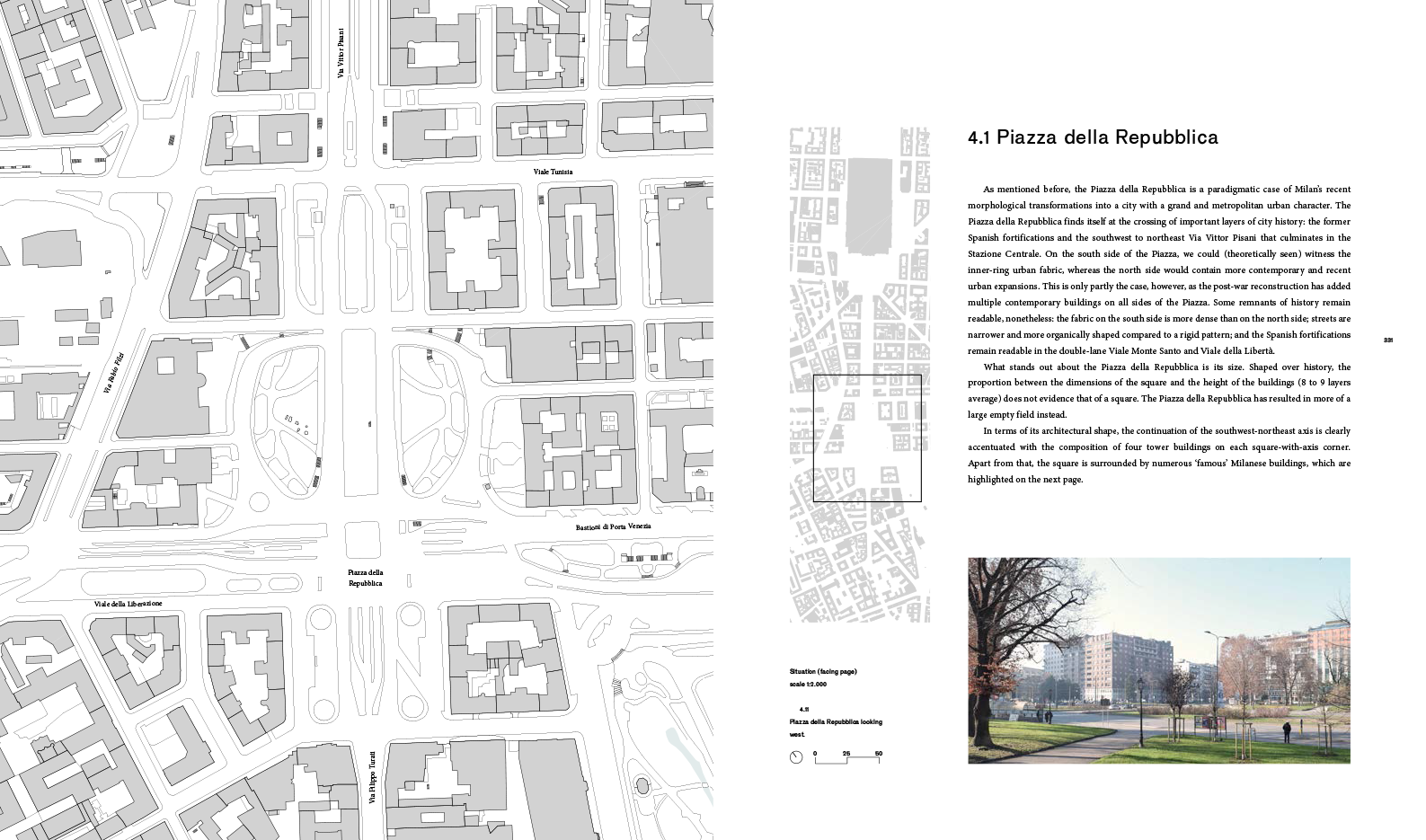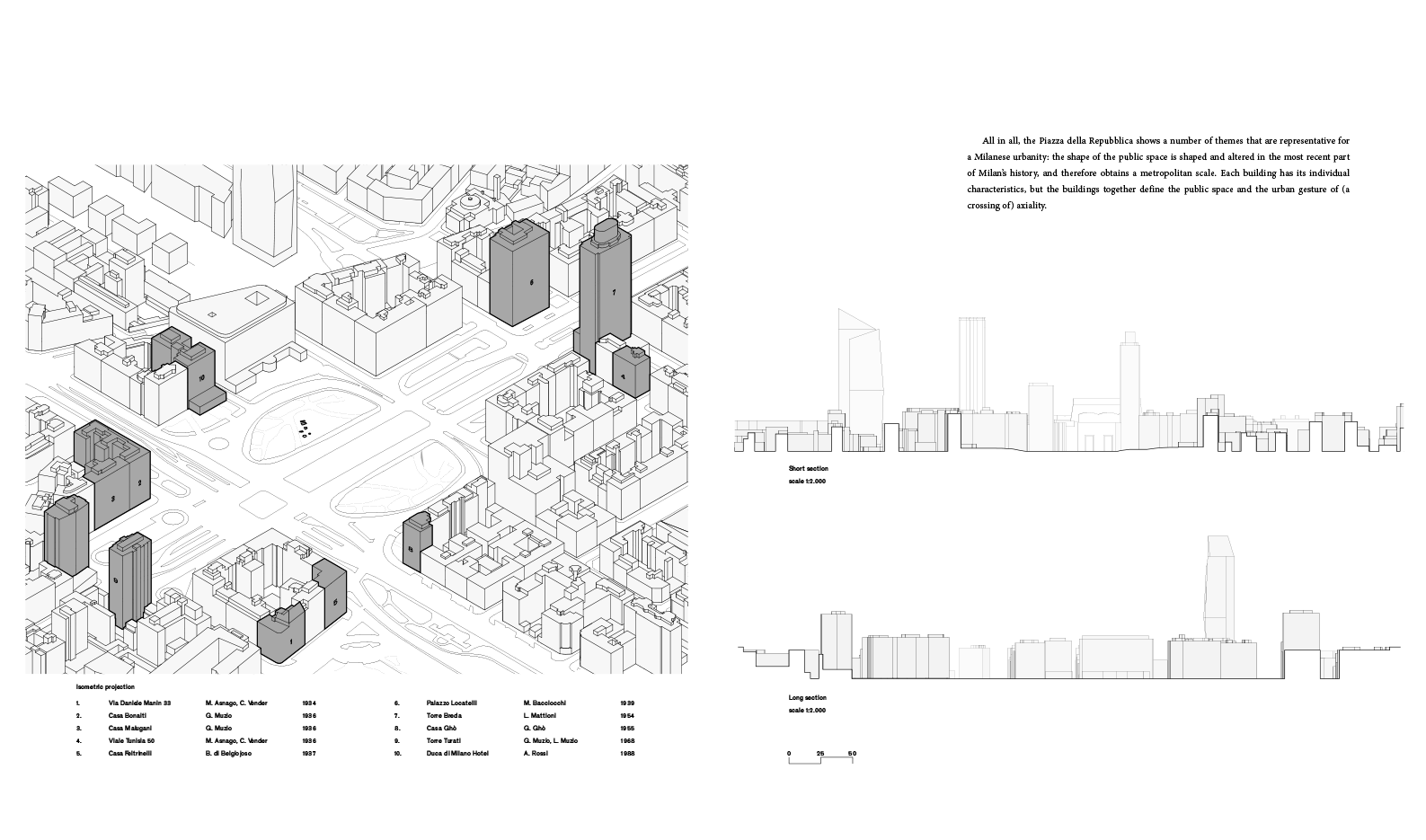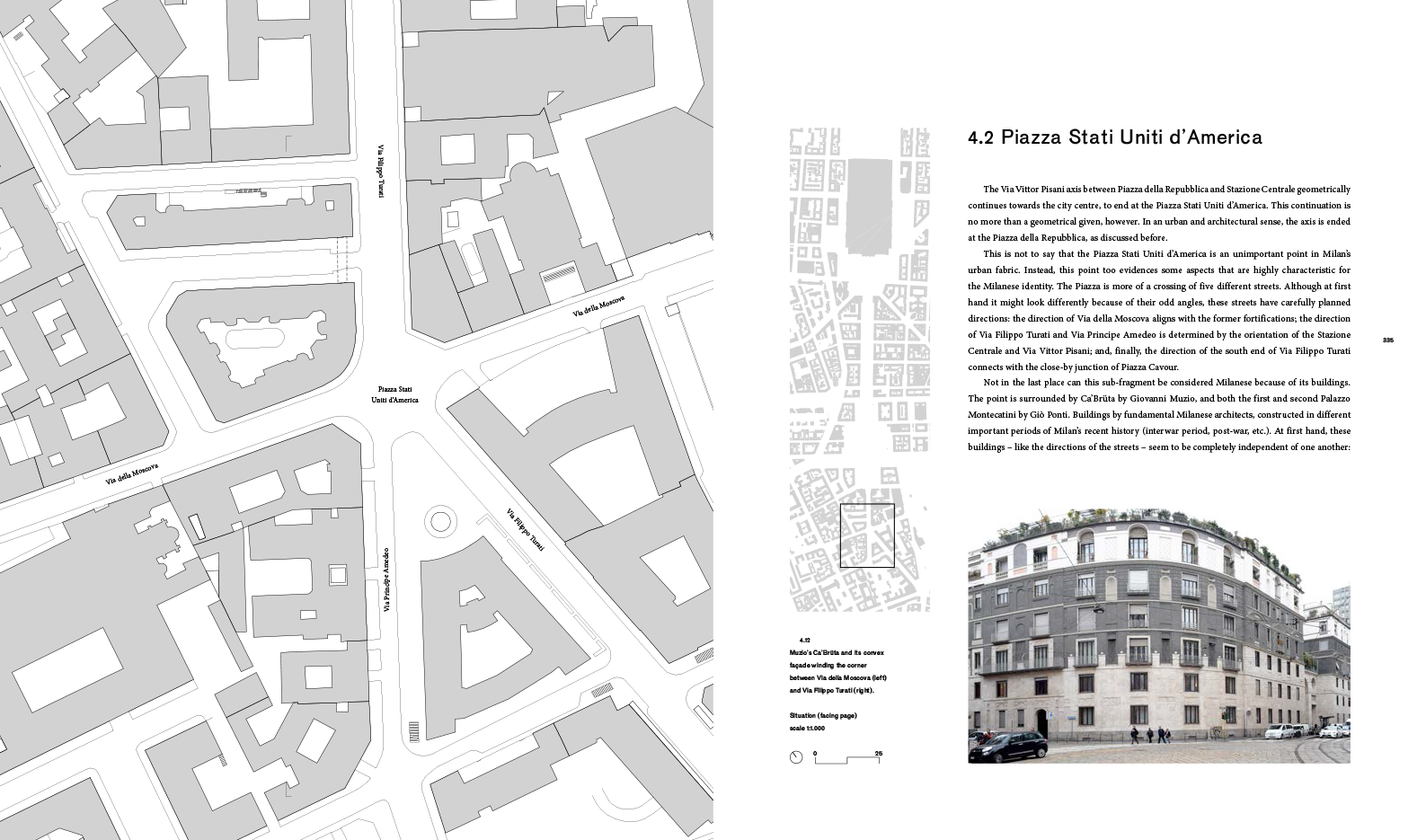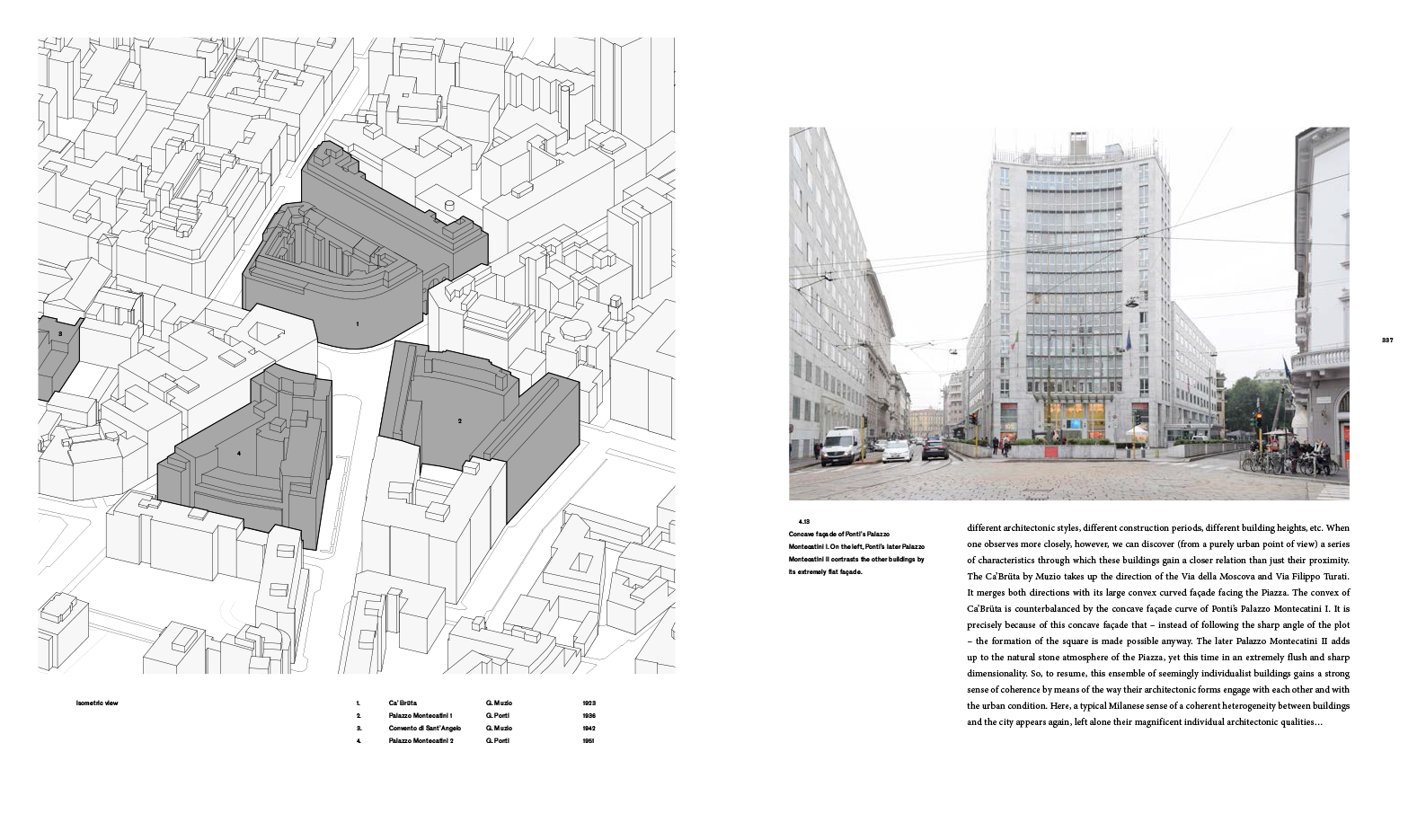firenze, a room with a view
napoli, viaggio in italia II
napoli, viaggio in italia I
marseille, patchwork city
madrid, topography of power
milano centrale
atlas
morphological series
fragment analysis
individual buildings
graduation projects
max van der westerlaken
daan jenniskens
antwerpen, de getekende stad
la città di roma
gran torino
münchen rekonstruiert
potsdam unraveled
berlin als modell
de rede van amsterdam
amsterdam langsdoorsnede
amsterdam dwarsdoorsnede
Part 2 of the atlas uses the urban fragment as a tool to extract information on the (complex) relation between scales the city of Milan is involved with. Four fragments are analysed by studying their historic development, urban tissue grain, spatial proportions, building block structure, sequences of (urban) spaces, all the way to the scale of architectonic characteristics of (typical) individual buildings. On the basis of the morphologic studies and societal backgrounds in the previous section, four fragments could be defined that, together, show a decent representation of the Milanese tissue and the way it developed over time. These fragments are: Centro Storiche, Parco Sempione, Porte Monforte e Venezia, and Stazione Centrale.
